Reviews
James Cameron
USA, 1981
Credits
Review by David Carter
Posted on 07 October 2011
Source Sony Pictures DVD
Categories 31 Days of Horror VIII
Much has been made about the number of actors and actresses who began their careers in the horror genre. Jamie Lee Curtis, Kevin Bacon, Johnny Depp, and dozens more used horror as their entrée to the world of more “serious” projects, and not all stars look back fondly on these roots. Less is made about the several directors who helmed horror films for their first forays behind the camera. These “frightening firsts” were rarely commercially or critically well received; ironic given the later successes these filmmakers would have. The films we’ll be looking at over the next four weeks are a varied lot. In a few instances, the director was simply a “hired gun”; others were wholly responsible for the finished films. Some filmmakers have downplayed their debuts, while others have embraced these early works. Invariably, these frightening firsts allow us to reassess these overlooked works in light of their subsequent oeuvre, and examine how, if at all, these films influenced the works for which they are best known.
James Cameron is responsible for the two highest grossing films of all time, Titanic and Avatar, and, given the combined two-and-a-half-billion-dollar difference between his works and the third place film, it is unlikely that he will lose that distinction any time soon. Adding to his commercial successes, Cameron has received multiple accolades, from critical prizes to Academy Awards. 1984’s The Terminator was the public-at-large’s first exposure to Cameron’s effects-intensive take on the blockbuster, but this first success was not Cameron’s first film work. He served as art director for the 1980 Seven Samurai/Star Wars hybrid Battle Beyond the Stars for Roger Corman, who gave many famous directors their first job in cinema. Corman also figures (indirectly) into Cameron’s official directorial debut—a sequel to Corman’s 1979 Piranha, Piranha II: the Spawning.
The serenity of Club Elysium is disturbed when a guest dies while on a beginner’s scuba expedition. Instructor Anne has the misfortune of finding the man’s corpse inexplicably stripped of its flesh. She wants to investigate further but her curiosity is left unsated when her police officer ex-husband Steve (Lance Henrikson) refuses to let her examine the body. Lothario club guest Tyler is more than willing to oblige, however, and he assists Anne in breaking into the morgue for another look. Their investigation is quickly put to an end by a nurse who soon suffers a gory fate when a flying piranha leaps from the corpse and begins devouring her.
Anne finds herself a suspect in the nurse’s death, strengthening her resolve to find out what is really happening. After confiding in Tyler that she believes fresh-water piranhas are somehow living in the seas, he reveals to her both his real identity and the truth behind the deaths. Tyler is in reality a biochemist who previously had genetically modified piranhas for use in Vietnam who have now been accidentally unleashed—the plot of the original Piranha. The twist here is that two of the species mixed with the piranha were the grunion, which has a limited ability to survive out of the water, and the flying fish, able to glide out of the water for considerable distances. Thus Club Elysium is plagued by an army of flying killers (the film’s alternate title) from which it cannot escape.
Piranha II is, as you can guess, a Jaws rip-off. It was produced by Ovidio Assonitis, a filmmaker who was no stranger to rip-off cinema having directed The Exorcist clone Beyond the Door and one previous Jaws rip-off, Tentacles. There are conflicting reports as to how much of Piranha II is Cameron and how much is Assonitis. Though it is undeniable that Assonitis likely had the majority of creative control, Cameron’s contributions to the film are numerous and unmistakable. For his part, Cameron has never tried to actively distance himself from the film and has instead made favorable references to it in interviews.
Cameron penned the screenplay under a pseudonym, and Piranha II introduces several narrative and visual themes that would reappear in his later work. The most immediately recognizable of these is the film’s focus on the mother-child relationship. The rescue of Anne and Steve’s son Chris takes up most of the film’s climactic moments, and a primacy of the mother-child relationship would factor heavily into The Terminator and would be modified in the form of Ripley/Newt in Aliens. Related to this is Cameron’s use of a strong female lead. Ultimately Anne is the only character who is proactive about the threat posed by the piranha, and it is she who finally destroys them, while male police officer Steve is relegated to guarding the children. Strong female characters appear in the majority of Cameron’s work, with the most notable being the Terminator films, Aliens, and Avatar. Piranha II also provided Cameron with exposure to water-based narratives and filming, which would appear again in The Abyss and Titanic.
Piranha II is pure exploitation cheese, to be certain, and Cameron’s contributions do little to elevate it beyond that. Those watching the film for a glimpse of the talent that his later work displays will likely be disappointed—inspired moments are few and far between here. It can be assumed that the biggest lesson Cameron would learn from Piranha II is the necessity for complete creative control, a trait that has since become synonymous with him. It is a bit of an inauspicious start for what continues to be a historic career. The importance of the film cannot be underestimated, however, if merely for the simple fact that the stress of the production reportedly gave Cameron a nightmare that he would later turn into The Terminator.
More 31 Days of Horror VIII
-

Westworld
1973 -

Child’s Play
1988 -
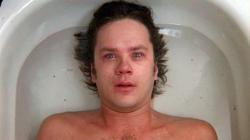
Jacob’s Ladder
1990 -

Willy Wonka and the Chocolate Factory
1971 -

El Vampiro
1957 -
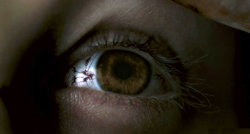
28 Weeks Later
2007 -

Piranha II: The Spawning
1981 -
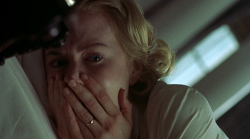
The Others
2001 -
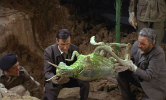
Quatermass and the Pit
1967 -

I Know Who Killed Me
2007 -

Bride of Re-Animator
1990 -

Alucarda
1978 -

Kakashi
2001 -

Seizure
1974 -

Night of the Living Dead
1968 -

Night of the Living Dead
1990 -
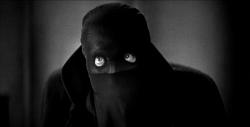
The Bat Whispers
1930 -

Miracle Mile
1988 -

Tintorera
1977 -

Paradise Lost
1996 -

The Cars that Ate Paris
1974 -

Ginger Snaps
2000 -
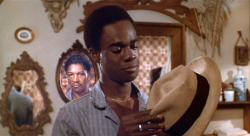
J.D.’s Revenge
1976 -

The Wicker Man
2006 -

Black Water
2007 -

Don’t Panic
1988 -

The Driller Killer
1979 -

Targets
1968 -

Mahal
1949 -
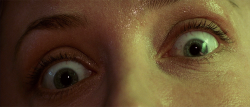
Event Horizon
1997
We don’t do comments anymore, but you may contact us here or find us on Twitter or Facebook.



